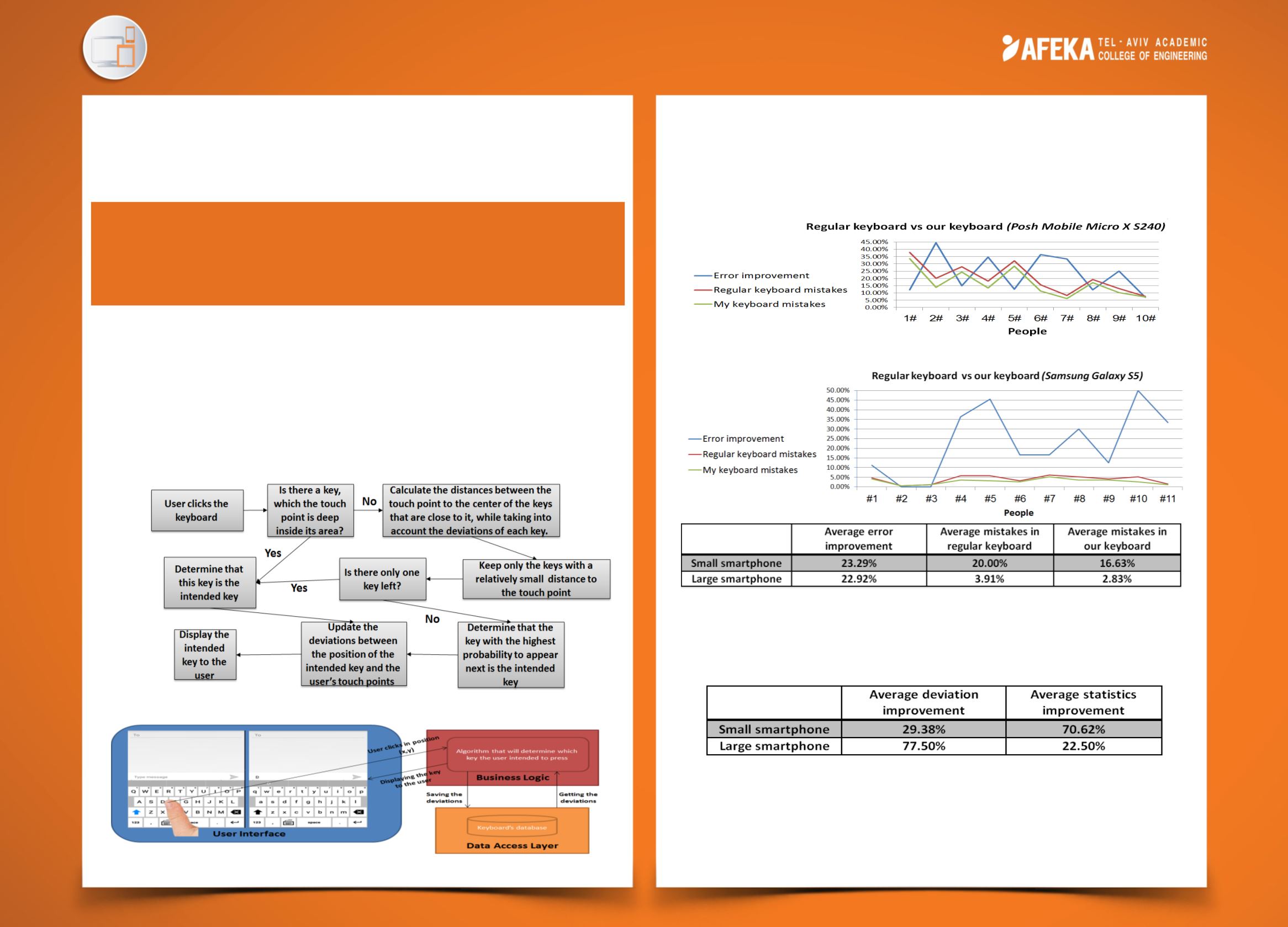

Accurate Keyboard for Smartphone
The developed Android keyboard from usage perspective will be identical to the Android
keyboards available today. The only difference between the keyboards will be the novel idea
of an algorithm that determines which key the user intended to click. This is done by
measuring the exact finger touch point and calculation of the deviations between the position
of the key to the user's actual touch points. In case of more than one answer select the
character that has the highest probability to appear next.
Following is a description of the main algorithm that determines which key the user intended
to press:
We divided the keyboard to three main components:
Rotem Rousseau
Advisor: Eran Aharonson
Software Engineering
We evaluated the errors of users typing on Android phone. The users were asked to type
predefined sentences. They typed on regular keyboard with and without our algorithm
running in the background. The participants used smartphones in two different sizes, large
screen and very small screen one.
The results on the small screen smartphone (Posh Mobile Micro X S240):
The results on the large screen smartphone (Samsung Galaxy S5):
We tested the assistance of two methods to determine which key the user intended to press,
first by the keys' deviations algorithm and later by probability of next key. We tested on both
devices and present the assistance of each method. The smaller the keys – the more use of
statistics.
In conclusion, by using the algorithm that determines which key the user intended to press,
we were able to reduce the user’s typing mistakes by 23%. Therefore our keyboard is more
accurate and adaptive than the standard keyboard for android smartphones available in the
market today without any user interface changes.
Text input on smartphones is prune to errors due to mismatch
between the user finger and the small keys on the phone. In
this work we try to overcome this issue by adapting to the
inherent mismatch
















